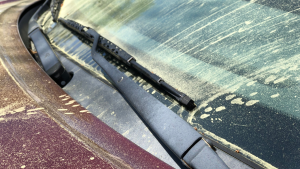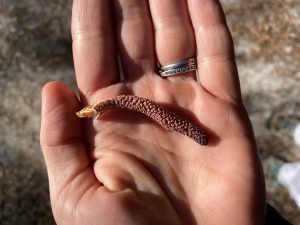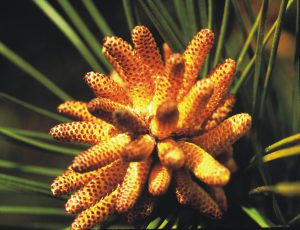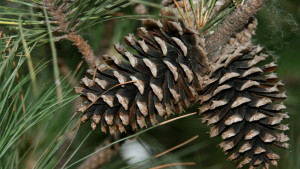It’s love! Love is in the air. It is Valentine’s month after all 😉 I’m only slightly kidding. What’s making your car yellow is pollen. If you’re not a plant person, you probably don’t think much about pollen, other than it being a nightmare for allergies. I couldn’t help but do a quick search for the definition of pollen. So, here’s what Google had to say, pollen is “a fine powdery substance, typically yellow, consisting of microscopic grains discharged from the male part of a flower or from a male cone. Each grain contains a male gamete that can fertilize the female ovule, to which pollen is transported by the wind, insects, or other animals.”

Phew! Let’s unpack that…
We get that it’s yellow and gets everywhere. Yeah? Then, it says it’s “discharged from the male part of a flower or from a male cone.” Did you even know there were male and female parts to plants?! You might recall that some plants have male and female reproductive organs on separate plants (think holly trees), called dioecious, and some have male and female reproductive organs on the same plant, called monecious. Still with me?
What is on your car right now is very likely pollen from a pine or oak tree. Today we will focus on pine trees because that’s what I have been seeing more of lately, but I’ll be back with more on oaks in a future blog. Pine trees are monecious, bearing male and female cones on the same tree. I’d be willing to bet, unless you’ve been on a hike with me, you might be thinking…”a male cone?”


Yup, that’s it. You’ve probably stepped all over them and never really paid much attention. The pine cones we often envision when talking about pine trees are the female cones. Both are uniquely designed for the purposes they serve.
As you might have guessed, pine trees reproduce via wind pollination…as do most conifers. Okay, now back to the love, it’s pretty cool how this works. Male cones are typically found on lower branches of the tree to help prevent the pollen from falling on the female cones of the same tree (i.e self pollination). Think of self pollination like inbreeding…it’s just not a good survival strategy. As mentioned in the definition, each pollen grain “contains a male gamete that can fertilize the female ovule.” Gamete is a fancy term for an organism’s reproductive cells. So the pollen grain contains the male portion of the unpaired chromosomes that, if the wind directs it appropriately, will end up on the female ovule containing the unpaired female chromosomes. When these two unpaired chromosomes unite via pollination, the female cones begin making a fertile seed…a very long process for pines!


So, the next time you’re mad you must wash your car (again), remember the yellow dust is just a sign that love is in the air for our beloved pine (and oak) trees. The science of pine cones is fascinating and I could go on writing, but for now, I’ll leave you with that. Stay tuned for more on pine cones in future blogs!
Did you know? We only have three pine species in Pinellas County so it wouldn’t be hard to pinpoint what species is releasing its pollen right now. See if you can figure it out from one of my previous blogs.
 5
5
